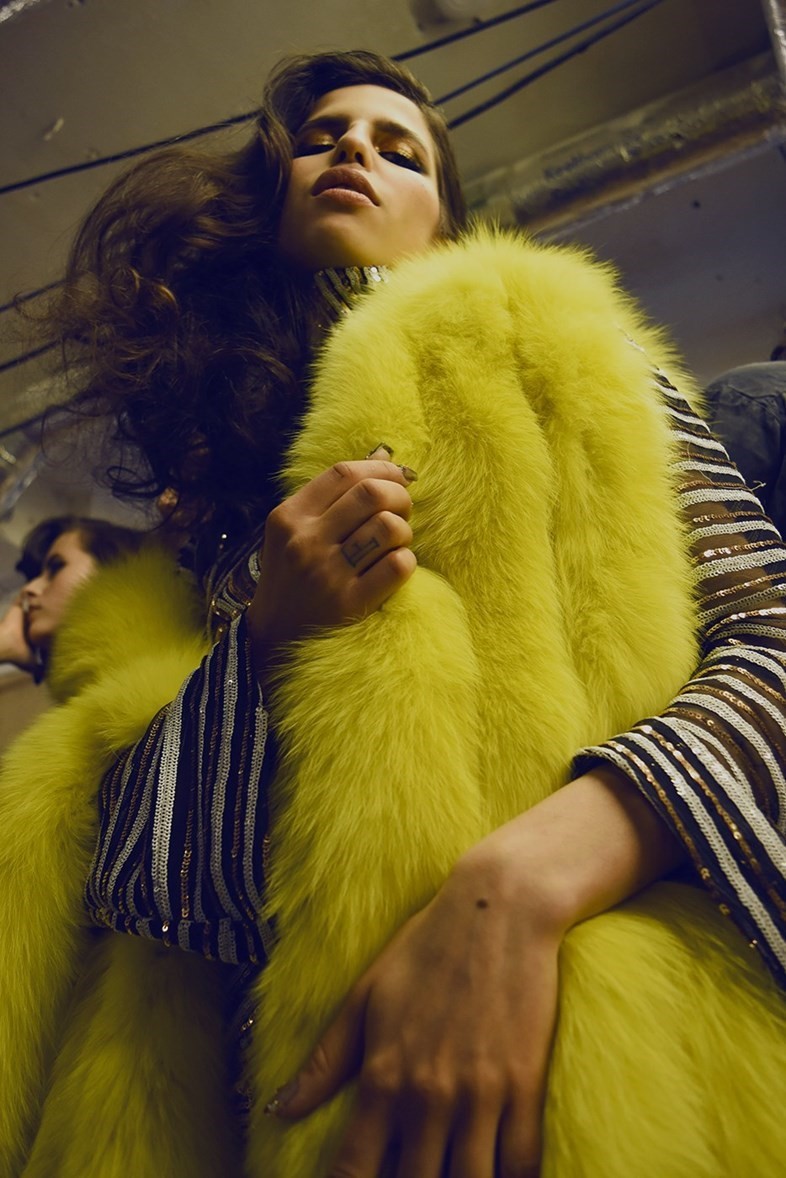London has long often acted as an incubator for young talent, and this season showed particular promise from three creatives celebrating fierce independence. Whether they were looking to Studio 54 glamour or post-apocalyptic futurism, medieval York or ancient Egypt, Michael Halpern, Matty Bovan and Dilara Findikoglu each presented collections which were not only visually arresting, but were also executed with impressive precision; here we speak to each of them to discover the inspirations behind the clothes, and where they plan to go to next.
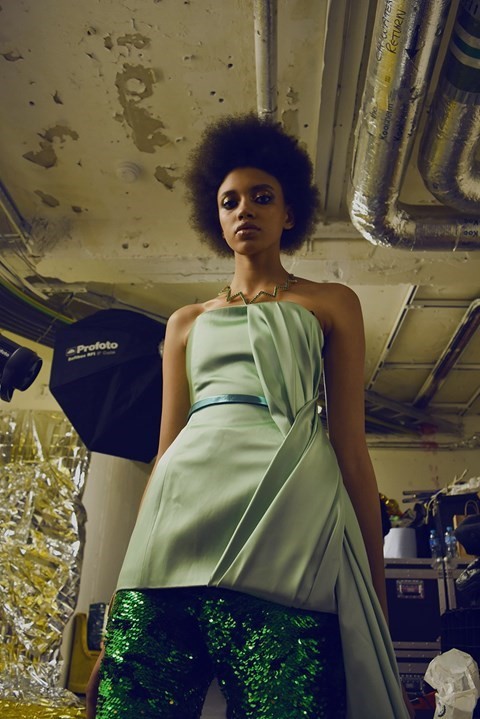

Halpern
Staged within what appeared to be a disused office space right by Piccadilly Circus was the first presentation by London’s rising star Michael Halpern. It was only a year ago that Halpern showed his remarkably structured version of disco couture as part of the Central Saint Martins graduate show – and yet, in just 12 short months (much of which has been spent working at Versace), he has become one of the city’s most watched emerging talents; for this debut, he worked with a team of industry heroes including Patti Wilson, Sam McKnight, Lynsey Alexander and Shona Heath. “I think people forget how green I am!” he laughed. “Sometimes they’d say, ‘oh we need a meeting with your entire team’ and I’m like, ‘my entire team is me and one other person!’” But, in spite of his newness to the industry, the allure of Halpern’s designs – of their tawdry glamour, their impeccable corsetry, of the spangly minidresses worn with technicolour fur stoles that trailed along the ground behind models – is clear-cut. While they pay a direct homage to the halcyon days of Studio 54 and Antonio Lopez, there is something determinedly modern about their impact.
“I’m aware that things can start to look really showgirl really quickly,” Halpern said of his abundant use of sequins and shimmering satins, which were a development on the same themes that he explored at CSM: horse-diving showgirls and undone glamour. “It’s about knowing when to really push it and when to back off a little; I think it becomes modern through things like the form of finishing, and the fit. You know the whole thing goes back to that really kind of severe juxtaposition… taking really expensive satins and putting them with really kind of tacky, almost cheap sequins, elevating it so it kind of felt really natural.” And strangely, in that deliberately shabby set-up, as girls navigated piles of old office chairs while dressed to the nines, their outfits treading that very fine line between garish and glamourous, it did seem natural. Natural, and completely compelling.
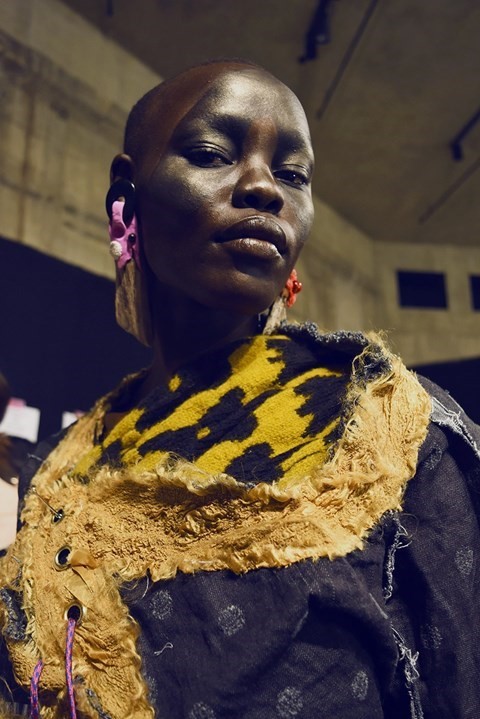

Matty Bovan
Another of London’s emerging talents whose name has quickly become synonymous with the subversive creative energy this city is renowned for is Matty Bovan, whose second season showing under the Fashion East umbrella showed a remarkable progression of his already-familiar DIY aesthetic. Bovan studied fashion knitwear at CSM and, while his S/S17 collection started to explore his love for knitted fabrics through crochet and macrame teamed with lurex and chainmail, this time similar techniques achieved a more ominous yet distinctly beautiful impact. “It was some kind of dystopian, medieval sci-fi future that I was seeing,” he said. “The clothes, everything, was kind of washed and felted and worn... not really fresh.”
Comprised of left-over fabrics from his student days and end-of-run yarns, Bovan was seemingly offering a quietly thoughtful backlash against mass-production and big business – a sentiment visibly echoed in the ‘Bovan Corporation’ patches that were appliqued to T-shirts and jackets. “It was quite tongue-in-cheek; in all the sci-fi films I was watching, like Alien and Blade Runner, the evil personas are corporations and companies. They have this heavy, weighted name and I thought that was quite funny to have these mass-produced, quite shiny-looking patches against all the other materials. It’s something I’m really into, the idea of this sinister, corporate shadow.” Such a thematic – of post-apocalyptic survivalism and the ominous impact of big business politics – is clearly relevant but, most importantly, operated as the perfect backdrop to the development of Bovan’s creative identity.
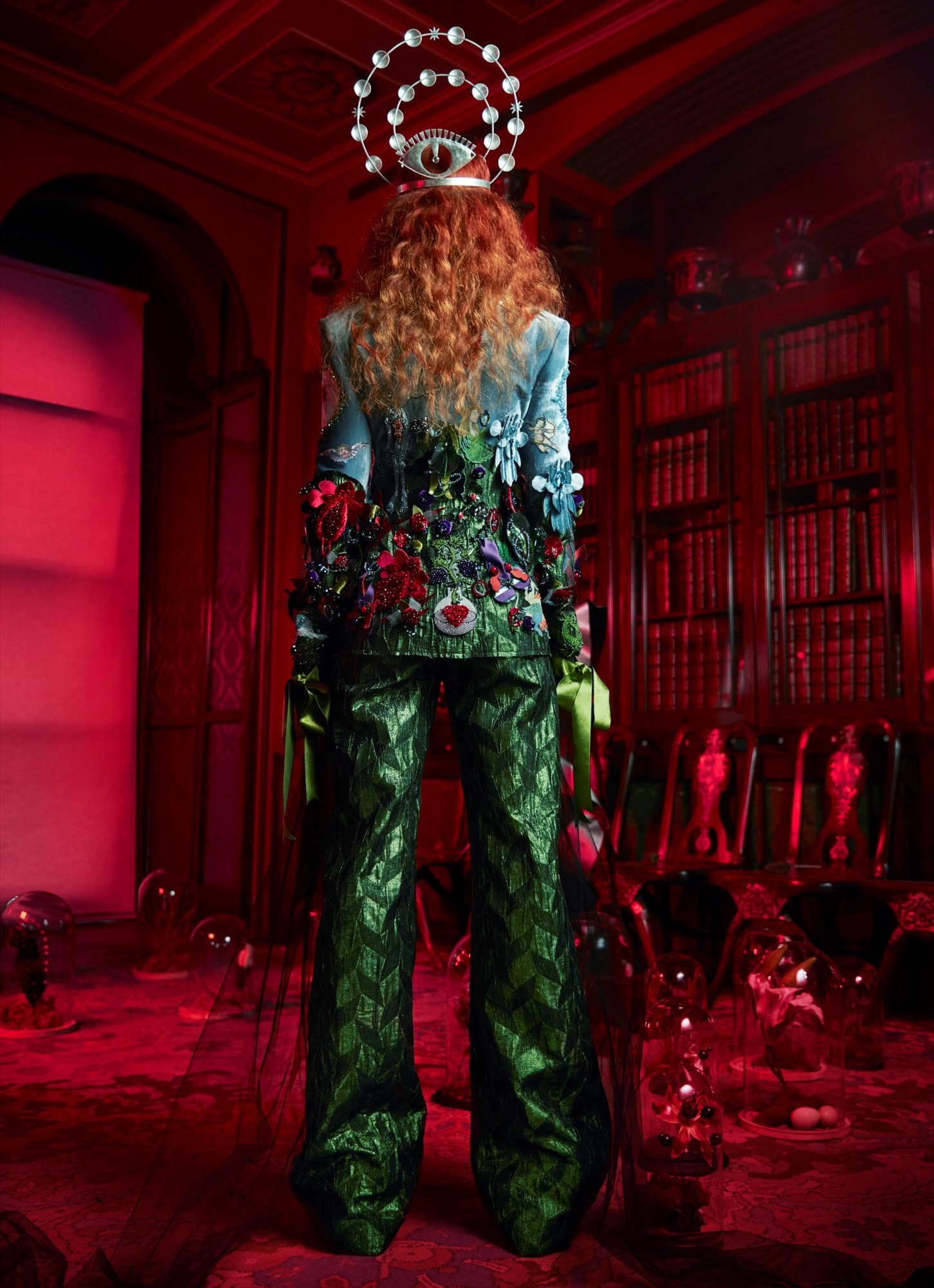
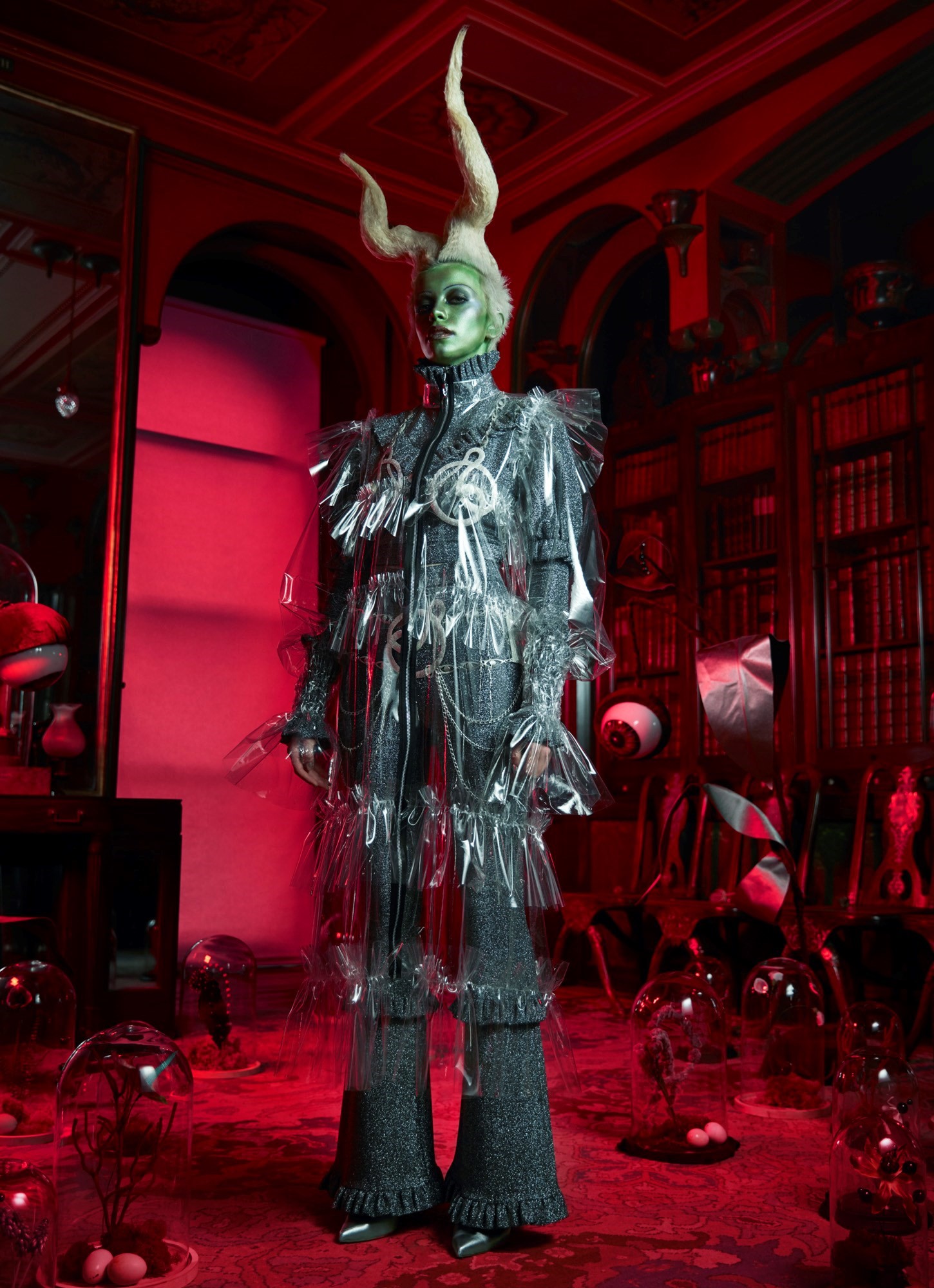
Dilara Findikoglu
Another young designer riffing on post-apocalyptic aesthetics was Dilara Findikoglu, who has been making waves ever since staging her first guerrilla presentation outside of the CSM BA graduate show in 2015. “They’re my New World Order,” Findikoglu explained of the army of women who wore this collection, a medley of assorted cultural symbolism which manifested on theatrical capes, gothic Victoriana and deconstructed suiting, each executed with exacting finesse. “I’m not happy with the situation we are in, so I wanted to imagine a world after this is all over... a place of war and peace; aliens mixed with humans; the Medieval with the Middle East.” When presented in Sir John Soane’s museum, a space of particularly impressive historic eclecticism, such a scene made for dramatic impact.
“I’m particularly interested in ancient technology,” Findikoglu continued – and her futuristic interpretation of arcane emblems was particularly appealing when translated into jewellery by London-based Slim Barrett: face-chains and headpieces and spiralling antennae. “I work with craft and embroidery,” she said “and when I met Slim, I couldn’t believe how relevant his world was to mine... he hand-makes everything and when I went to his studio, I found pieces of myself in there.” Such a dedication to craftsmanship is perhaps one of the most arresting facets of Findikoglu’s designs, and it will be interesting to see where she will take that to next: she has already proven her savvy approach to business expansion through selling limited-edition runs of her hand-finished pieces in Selfridges, and so far has her heavy-metal aesthetic travelled that, alongside debuting this collection, she also presented the merchandise that she has recently designed for Marilyn Manson’s upcoming tour. With these sorts of projects, and a nomination for the LVMH Prize awarded before she has even been assigned an official London Fashion Week schedule slot, we are anticipating big things ahead.
